
Copernical Team
World's first space tourist plans new flight to Moon with SpaceX
 Dennis Tito, an American entrepreneur who in 2001 became the first person to pay for their own space voyage, said Wednesday he plans to fly with his wife Akiko on a future SpaceX mission around the Moon.
The voyage will take place after Elon Musk's company has finished developing its prototype Starship rocket and has flown a first commercial flight that will include Japanese billionaire Yusa
Dennis Tito, an American entrepreneur who in 2001 became the first person to pay for their own space voyage, said Wednesday he plans to fly with his wife Akiko on a future SpaceX mission around the Moon.
The voyage will take place after Elon Musk's company has finished developing its prototype Starship rocket and has flown a first commercial flight that will include Japanese billionaire Yusa NASA sets new Artemis I launch window for Nov. 14
 After a string of setbacks, the U.S. space agency, NASA, said Wednesday it would try again to conduct its Artemis I test flight to the moon on Nov. 14.
NASA said it's found a 69-minute launch window that opens shortly after noon EST on Nov. 14 for the mission.
Crews in late September were forced to scrub a launch and move the $4.1 billion rocket from the launch pad back to its st
After a string of setbacks, the U.S. space agency, NASA, said Wednesday it would try again to conduct its Artemis I test flight to the moon on Nov. 14.
NASA said it's found a 69-minute launch window that opens shortly after noon EST on Nov. 14 for the mission.
Crews in late September were forced to scrub a launch and move the $4.1 billion rocket from the launch pad back to its st NASA's Mars mission shields up for tests
 Micrometeorites are a potential hazard for any space mission, including NASA's Mars Sample Return. The tiny rocks can travel up to 50 miles per second. At these speeds, "even dust could cause damage to a spacecraft," said Bruno Sarli, NASA engineer at NASA's Goddard Space Flight Center, Greenbelt, Maryland.
Sarli leads a team designing shields to protect NASA's Mars Earth Entry System from
Micrometeorites are a potential hazard for any space mission, including NASA's Mars Sample Return. The tiny rocks can travel up to 50 miles per second. At these speeds, "even dust could cause damage to a spacecraft," said Bruno Sarli, NASA engineer at NASA's Goddard Space Flight Center, Greenbelt, Maryland.
Sarli leads a team designing shields to protect NASA's Mars Earth Entry System from Japan orders satellite-carrying rocket to self-destruct after failed launch
 A Japanese rocket attempting to launch a satellite into space self-destructed after it failed to reach trajectory after liftoff on Wednesday.
The Epsilon-6 rocket took off from the Uchinoura Space Center in Kagoshima Prefecture on Wednesday. The rocket, though, deviated from its intended trajectory shortly after leaving the launching pad.
Officials from the Japan Aerospace Explor
A Japanese rocket attempting to launch a satellite into space self-destructed after it failed to reach trajectory after liftoff on Wednesday.
The Epsilon-6 rocket took off from the Uchinoura Space Center in Kagoshima Prefecture on Wednesday. The rocket, though, deviated from its intended trajectory shortly after leaving the launching pad.
Officials from the Japan Aerospace Explor Next-generation spacesuits on drawing board for NASA moon mission
 Nicole Mann, spacecraft commander of NASA's SpaceX Crew Dragon Endeavor, just arrived at the International Space Station last week wearing a spacesuit designed decades ago for male test pilots.
The suit, originally developed for Space Shuttle missions that started in 1981, has been upgraded through the years, but has far outlasted its original 15-year design.
All that will change
Nicole Mann, spacecraft commander of NASA's SpaceX Crew Dragon Endeavor, just arrived at the International Space Station last week wearing a spacesuit designed decades ago for male test pilots.
The suit, originally developed for Space Shuttle missions that started in 1981, has been upgraded through the years, but has far outlasted its original 15-year design.
All that will change NASA's new November targets mean night launch for Artemis
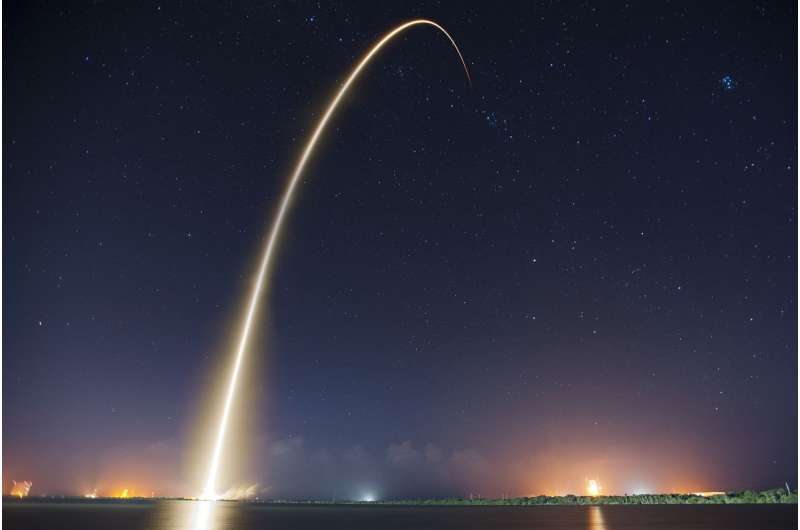
If NASA gets to finally ignite its massive candle for the Artemis I moon mission, it's going to light up the night skies across Florida with three November launch dates that all fall after midnight targeted for liftoff from Kennedy Space Center.
NASA's first attempt to launch the Space Launch System rocket topped with the Orion space capsule falls on Monday, Nov. 14 with a 69-minute window that opens at 12:07 a.m. Two two-hour backup windows are available on Wednesday, Nov. 16 starting at 1:04 a.m. and Saturday, Nov. 19 starting at 1:45 a.m.
If it goes up, SLS with its 8.8 million pounds of thrust at liftoff would become the most powerful rocket to ever launch from Earth besting the Saturn V rockets from the Apollo missions.
Next month's full moon falls on Nov. 8, so the first attempt should feature a waning gibbous moon still rising high in the eastern sky at midnight. Florida's notorious afternoon showers during the summer will also be not as much of a concern in the overnight hours.
If it hits its first target, the uncrewed Orion capsule would make several orbits around the moon traveling farther from Earth than any other human-rated spacecraft before returning on Dec.
World's 1st space tourist signs up for flight around moon
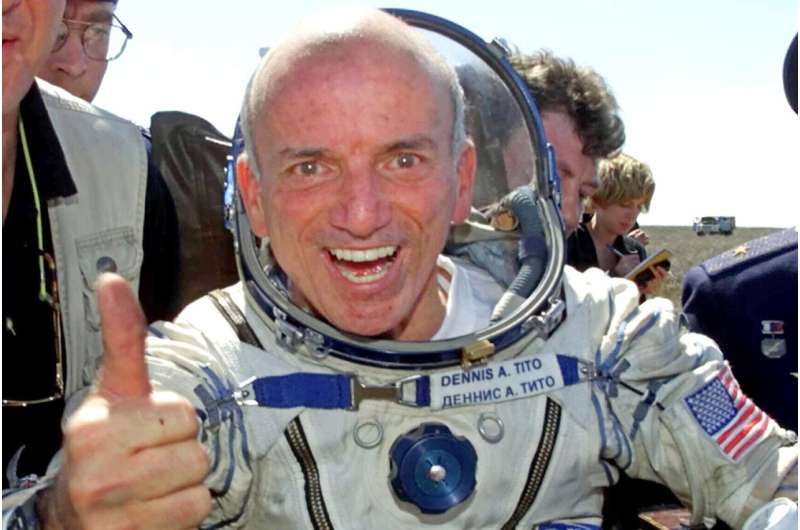
Memories of Minerva – Samantha Cristoforetti returns to Earth
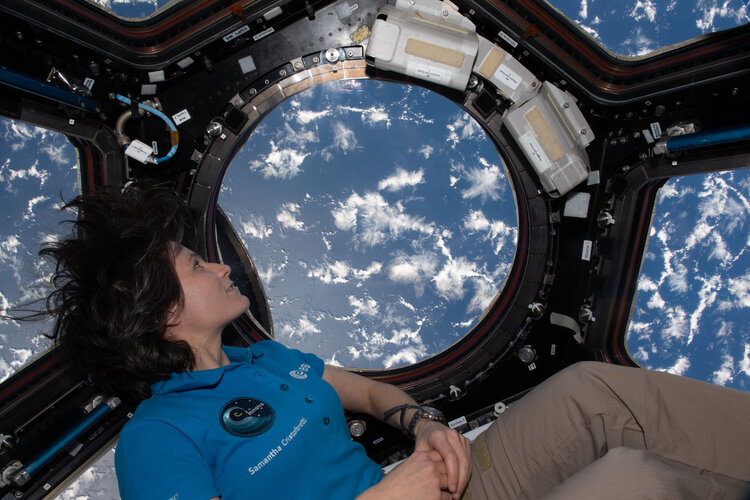
ESA astronaut Samantha Cristoforetti is returning to Earth alongside NASA astronauts Kjell Lindgren, Bob Hines and Jessica Watkins, marking the end of her second mission to the International Space Station, Minerva. Watch Crew-4's return live on ESAwebTV2 from 23:00 CEST (22:00 BST) 12 October.
First kinetic impact test succeeds in shifting asteroid orbit
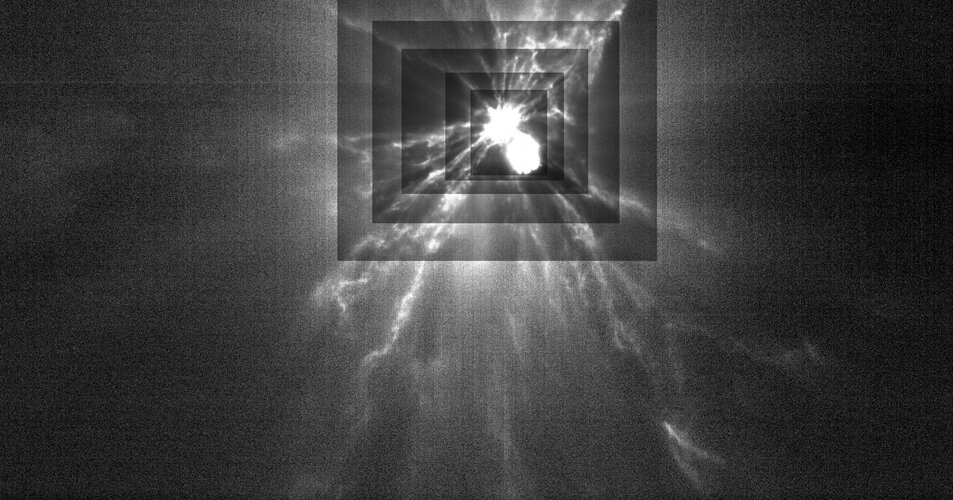
The kinetic impact of NASA’s DART spacecraft with the Dimorphos asteroid around its larger Didymos parent body has succeeded in shifting its orbit, meaning humankind’s first planetary defence test has been successful. Observations are continuing of the debris plume caused by the collision for as long as possible, as the asteroid system gradually recedes from Earth.
Ariane 6 assembly timelapse
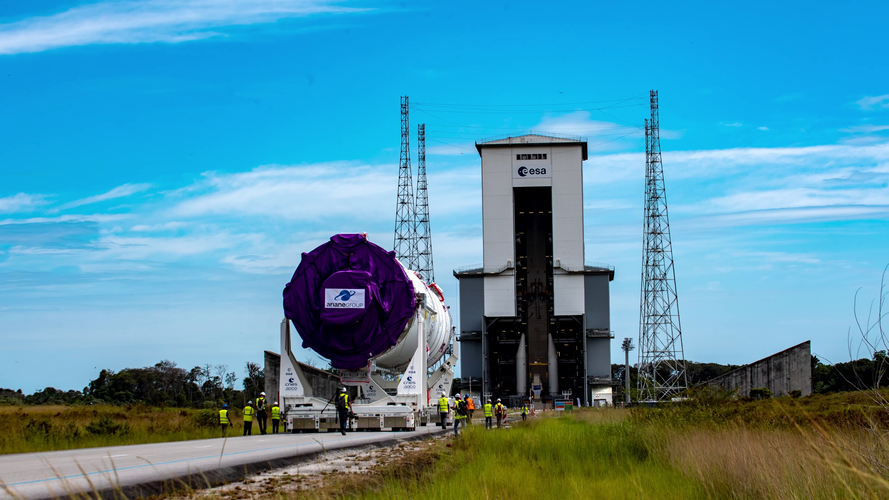 Video:
00:02:22
Video:
00:02:22
At Europe’s Spaceport in French Guiana, a test model of the Ariane 6’s central core has been assembled for the first time. Ariane 6 is the first Ariane rocket to be assembled horizontally, which is simpler and less costly than more traditional vertical assembly. One of the P120C boosters can be seen from different angles during installation, before the rocket’s central core is moved to its launchpad and placed upright in its mobile gantry. With the central core and boosters in place, combined tests validate compatibility between all components of the complete launch system.

